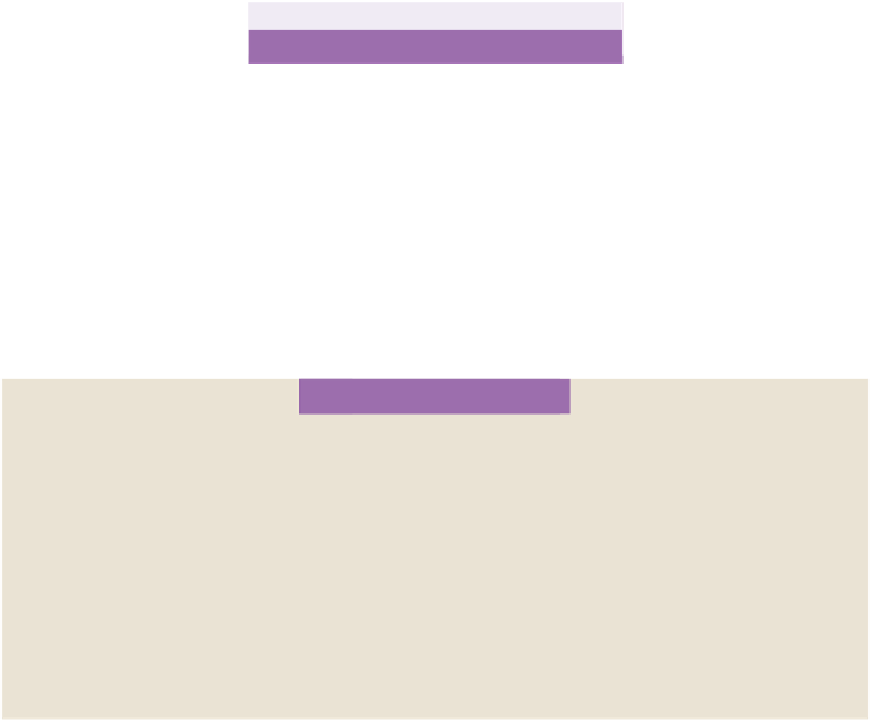Biology Reference
In-Depth Information
CHAPTER
5
Me
mbrane Polar Lip
ids
OUTLINE
A. Bonds Connecting to Acyl Chains
57
F. Plant Lipids
76
B. Phospholipids
60
G. Membrane Lipids Found in Low
Abundance
Fatty Acids
61
78
Glycerol
61
Free Fatty Acids and Lysolipids
78
Phosphate
62
Lipid-Soluble Vitamins
79
Ubiquinone (Coenzyme Q)
80
C. Sphingolipids
71
Summary
81
D. Sterols
74
References
82
E. Membrane Lipid Distribution
76
Free fatty acids are at best a minor component of most membranes, as large quantities are
known to disrupt membranes through a 'detergent effect'. When the concentration of free
fatty acids in solution reaches a threshold value, known as the critical micelle concentration
(CMC), the fatty acids aggregate into mostly spherical structures known as micelles
(
Figure 5.1
), although other structures including ellipsoids are also possible. A typical fatty
acid micelle is an aggregate with the hydrophilic carboxylic acid head in contact with the
surrounding water and the hydrophobic tail sequestered away from water in the dry micelle
center. Micelles can accommodate membrane phospholipids, thus destroying the membrane
through the 'detergent effect'. CMCs for fatty acids decrease with increasing chain length and
increase with increasing double bonds.
A. BONDS CONNECTING TO ACYL CHAINS
By definition, complex lipids are molecules that, when hydrolyzed, release a fatty acid.
The fatty acids are primarily attached to the rest of the lipid via an oxygen ester, although



